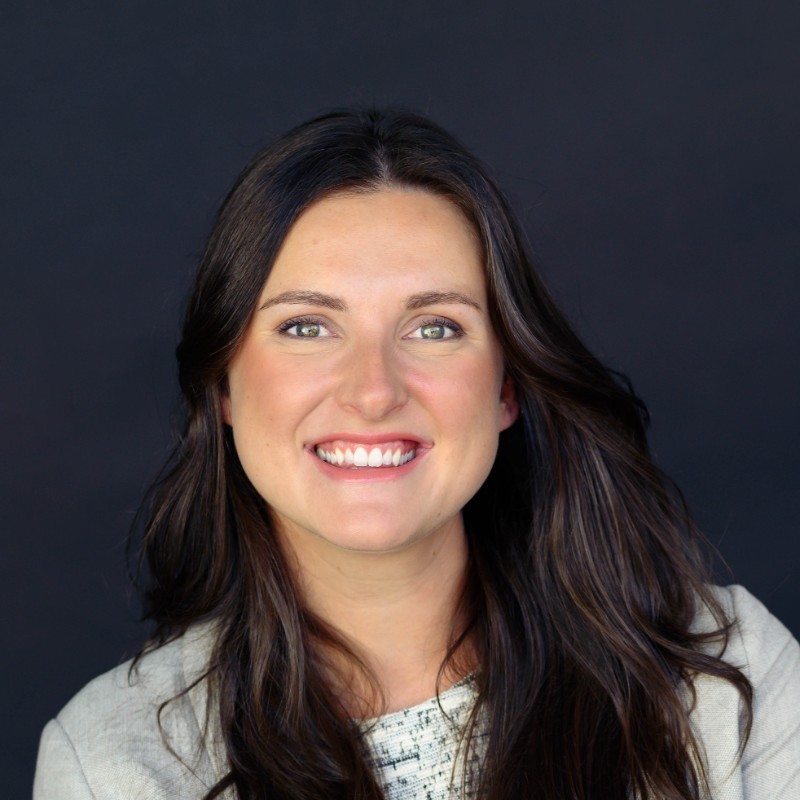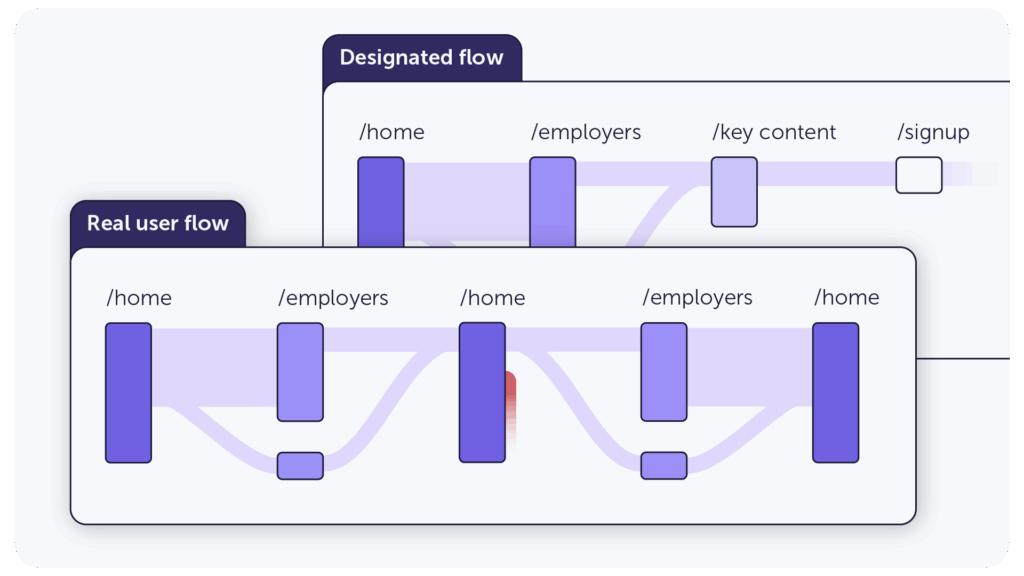Get the Curative story sent directly to your inbox
If you’ve followed Curative’s story, you know this is a company that doesn’t shy away from change.
In January 2020, the cofounders launched as a sepsis diagnostic startup. But when the pandemic struck, they pivoted, quickly becoming the largest COVID-19 testing provider in the United States. Then, as the world moved beyond COVID, Curative made another big shift: they reimagined themselves as a next-generation health insurance provider.
They saw how broken the healthcare system felt, especially around insurance. So they asked themselves: “What if they became a health plan?”
The result? A new kind of employer-sponsored health insurance focused on simplicity, zero out-of-pocket costs, and personalized preventive care. The concept was bold. The execution, even bolder.
In our first case study with Curative, we explored how their marketing team overhauled the digital experience to support this pivot. They rebuilt the site, redirected their messaging, and used Mouseflow to realign UX and content with their new business model.
Now, Curative is in growth mode, scaling their health plan, entering new states, and attracting new audiences. This new chapter is about refining the experience, removing friction, and turning user data into smarter decisions at scale. And once again, Mouseflow is a key part of that journey.
Read up on the original pivot in our first case study with Curative.
The Challenge: From stabilizing to scaling – Why Journeys was the next step
After the pivot, Curative relied on Mouseflow tools like heatmaps, friction detection, and session replays to fix what wasn’t working and optimize priority flows. But as their audience grew and their content exploded, they hit a new wall: scale brought complexity.
They needed to understand how different user types, members, brokers, employers, providers, were moving through their site. Not just which pages they landed on, but how they got there, where they dropped off, and which routes led to conversions. Basically, they needed more than isolated data points.They needed to understand the bigger picture. And Mouseflow Journey Analytics was the missing piece.

We needed more than page-level data. We needed to connect the dots and see how people actually moved through our site.
When they launched Mouseflow Journeys, the impact was immediate. Over the next 90 days, Curative saw:
Those weren’t surface-level gains, they were the result of digging into actual user behavior and making fast, targeted changes.
The Solution: Building User Journeys that mattered
1. Conversion-first focus
They started by setting up Journeys on their two highest-value pages: the employer and broker lead forms. These two B2B audiences are the gateway to getting health plan members.
By mapping how users reached those pages, they quickly found that many were not following a clean path, and that helped them rework both the entry and exit flows.

We have 2 conversion pages on the site: one for employers, one for brokers. We wanted to understand how people were getting to those pages. Were they landing there directly from paid media, or were they navigating through the homepage or about page first?
2. Tracing behaviors before and after
One of the biggest insights came from tracking what happened before and after users hit a key page. Instead of flowing forward, users circled back multiple times, again and again, even just before converting. This signaled to the team that something wasn’t working as expected. According to Mackenzie, users were jumping back to the homepage as a kind of reset.

User behavior revealed – a key insight from Journey tracking
They responded by:
- Strengthening internal linking between key content
- Adding in-line CTAs where users were stalling
- Rethinking how pages connected to keep people moving
The result? Engagement shot up. In just 90 days, they saw:
3. Rethinking audience paths
Another surprise: brokers and employers weren’t staying in their respective lanes. Users were jumping between content meant for different audiences.
That insight led to structural changes: more cross-links, fewer dead ends, and clearer bridges between related pages. This helped reduce bounce rates and improve the clarity of the user experience.

Comparison of a designated user flow vs. real user flow on a website

We thought of our user types in neat boxes. Journeys showed us real people don’t behave that way.
4. Educating users through the Baseline Visit flow
Curative’s health plan includes a required “Baseline Visit” in the first 120 days to continue with $0 out-of-pocket costs. Educating users on this process is critical to members getting the most out of their plan.
To support this, the team developed a range of marketing content – “FAQs, blogs, and more” – to help members feel comfortable going into their Baseline Visit. The team used Journeys to track how users found and moved through this content: from Google searches to blog reads to member portal visits. These insights helped shape onboarding flows and improve content placement across the site.
5. Analyzing campaign landing pages
Lastly, they’re using Journeys to review no-index, no-follow landing pages built for campaigns. Even without SEO tracking, they could now see:
- Which users engaged after landing
- Whether visitors stuck around or dropped
- What actions followed campaign clicks
This helped inform future campaign messaging and layout decisions fast.

We have a suite of landing pages that are separate from the main site, tied to specific campaigns. Building out Journeys for those is something I want to explore in the next 60 days.
It was more than optimization – It changed how they work
Journeys didn’t just help optimize flows, it helped the team communicate what was happening. As Mackenzie puts it, “It’s easy to miss the story when you’re just staring at numbers. Journeys helped us show other teams exactly what users were doing and why it mattered.”
Whether getting buy-in from leadership, presenting changes to the content team, or walking through flows with designers, Journeys became a shared visual reference point for everyone.
What’s next for Curative (And what you can steal)
Now that they’ve uncovered and acted on key patterns, Curative is building on their momentum. Here’s what their next phase with Mouseflow looks like and what other growth teams can learn from it.
1. Making conversion journeys repeatable
Curative is investing time in mapping out their best-performing conversion flows and turning them into templates. That means using the same effective navigation logic across landing pages and campaigns.
Takeaway: When you find a journey that converts, reuse the structure.
2. Using journeys to prioritize content updates
With new blogs and wellness content published regularly, the team is using Journeys to monitor how people interact with these materials and which paths actually lead to action.
Takeaway: Not all content needs more traffic. Some just need a better journey.
3. Designing new pages with behavior in mind
Rather than waiting for drop-offs to reveal problems, Curative is now planning new page launches with Journey patterns in mind from day one.
Takeaway: Use past behavior to build better future experiences.
4. Catching silent drop-offs
Not all friction shows up as high bounce rates. Sometimes, it’s repeated clicks, excessive page loops, or stalled engagement. Journeys help Curative spot those quiet issues early.
Takeaway: Fix what users tolerate before it turns into what they abandon.
5. Using journeys to make better marketing decisions
Beyond the site itself, Curative is now using Journey insights to inform media campaigns and keyword strategies, identifying which traffic sources drive the best flows, not just the most clicks.
Takeaway: A high-converting user journey often starts before someone hits your homepage.
The Bigger Picture
Curative’s first chapter with Mouseflow was about survival and reinvention. This one is about growth and momentum. They’ve moved from reactivity to proactive optimization. From fixing to building. From single-page decisions to end-to-end strategies that reflect how real people move, decide, and act.
So if your team is looking to scale, whether you’re in health tech, SaaS, or ecommerce, there’s a lesson here: you don’t need more tools. You need clearer insights about what’s really happening on your site. Mouseflow Journeys helped Curative find them. And turn those insights into action.

Journeys turned a lot of ‘we think’ into ‘we know.’ That made us faster, more aligned, and more confident in every decision.
Company: Curative
Tools used: Mouseflow, Google Analytics 4, Google Tag Manager, Hubspot, Looker Studio
CMS: Contentful
Features used in Mouseflow: Journey Analytics, Heatmaps, Friction Score, Session Replays, Conversion Funnels
